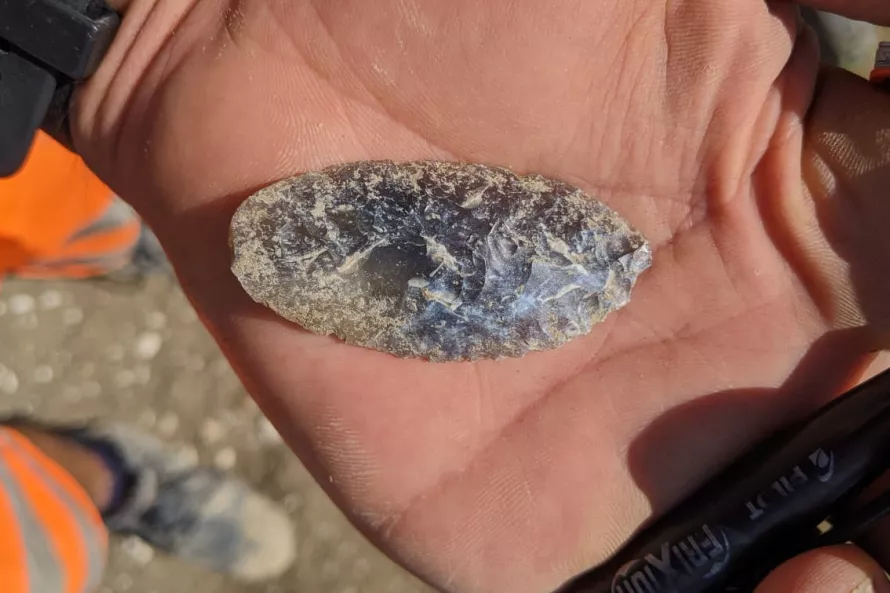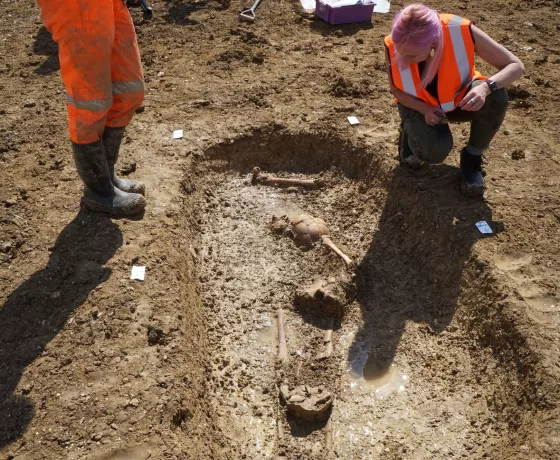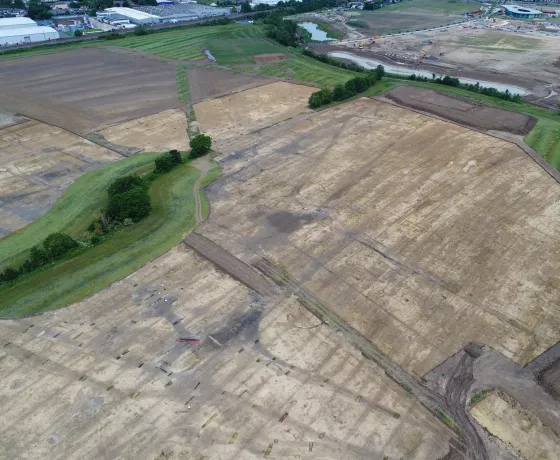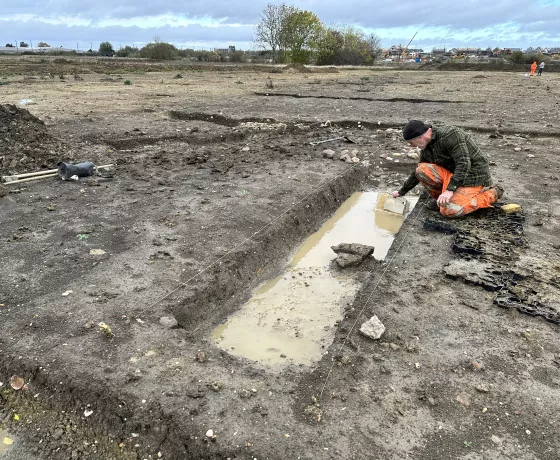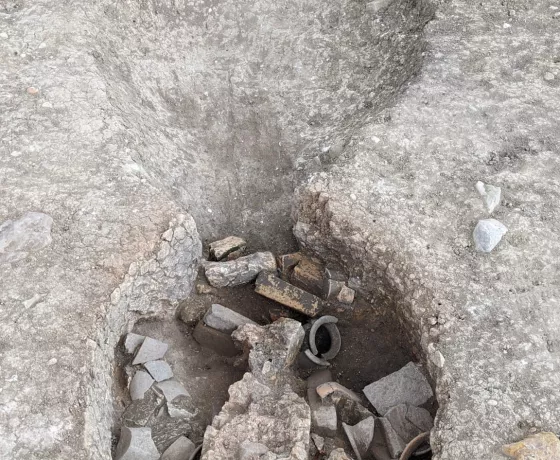There our archaeologist Rob was, cleaning back an area of a roundhouse ditch with his hoe and getting it ready for excavation, when he spots something out of the corner of his eye laid casually on the surface...
From initial analysis, this appears to be an early Bronze Age flint knife (known in archaeological terms as a type of 'lithic' or stone tool). It seems likely that it was buried within the upper layers of the roundhouse ditch, and then disturbed by ploughing or the machining of the top soil for excavation. This is one of the only pieces of evidence we have so far for pre–Iron Age activity at Wintringham and it raises some interesting questions. It's unusual in where it was found – why was something so meticulously crafted in the Bronze Age seemingly discarded in a much later Iron Age roundhouse ditch? It's also an unusual example of an early Bronze Age knife in being so intricately retouched - was it of a higher value to its possible Iron Age custodian, kept for its ancestral link or a ceremonial purpose, because of its quality? Of course - it could just be an older artefact left within the soil that has found its way into a later archaeological feature. As is usually the case with archaeology, the more we find the more questions we have!
To answer some of these questions, we can look to other sites that have comparable finds. An excavation by Oxford Archaeology of an Iron Age site in Caldecote in 2018 revealed little evidence of earlier activity, other than pieces of flint and a polished Neolithic axe head - also found at the top of a filled roundhouse ditch. This is similar to excavations currently underway at a site in nearby Cambourne. The site has little evidence of pre-Iron Age settlement, except this time a Neolithic axe head was found in a shallow Roman ditch, showing a continuation of this type of (possible) ritualistic behaviour into the Roman period.
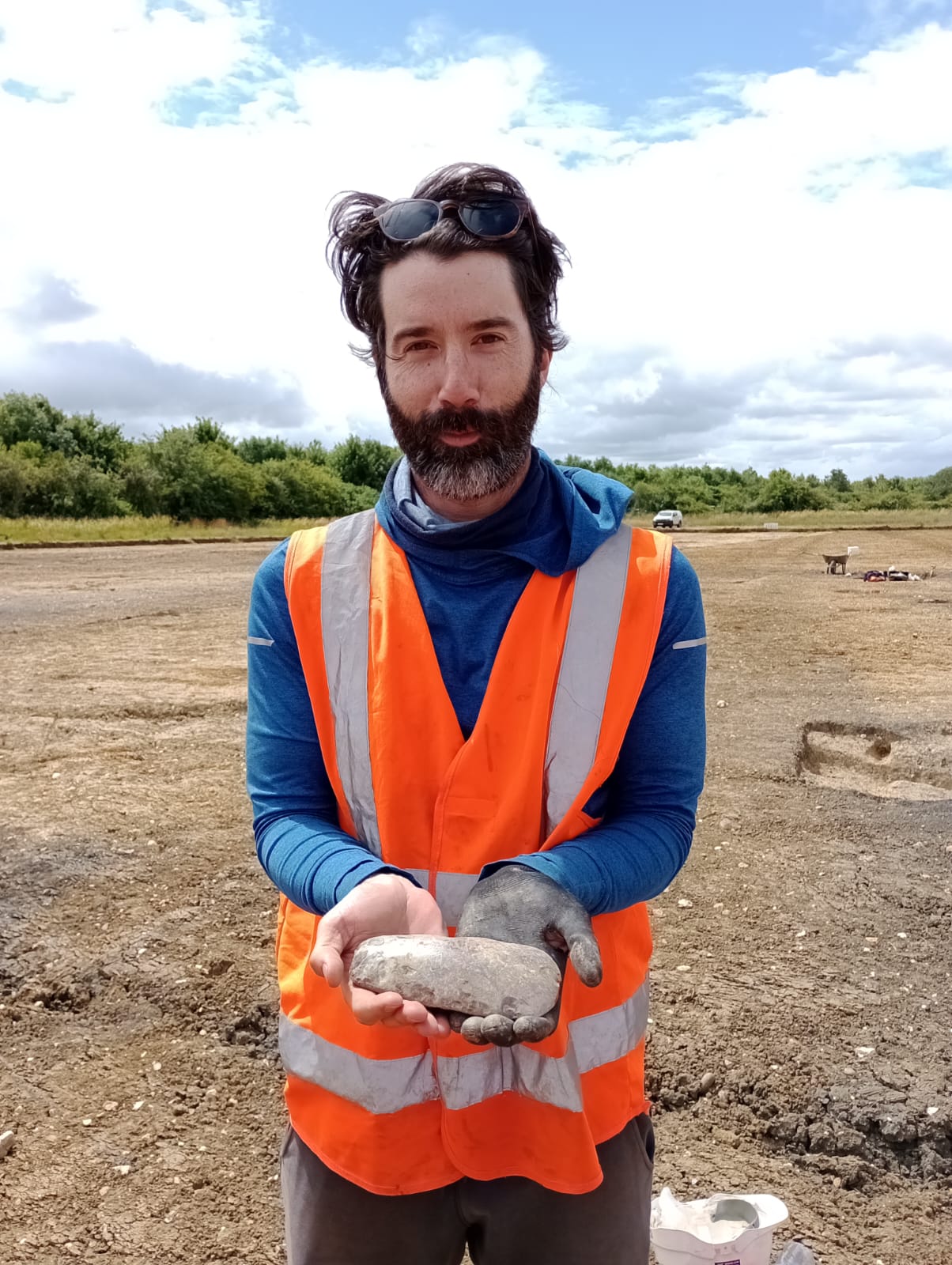
Why the one glove, Matt? Our Assistant Supervisor Matt with his Neolithic axehead found at a neighbouring excavation site in Cambourne.
Because of the lack of earlier activity across these sites, we can start to explore the idea that these finds could hold historic or ancestral value to later societies and are being purposefully placed rather than discarded. It suggests that the special treatment of these artefacts reflect their significance in some way. This is a long accepted theory within archaeology, having been observed at many sites across Britain (see below for further reading). There is even evidence of prehistoric lithic artefacts being used as charms and cures in the Post-Medieval and Early Modern period (Dowd, 2018).
It is also interesting to note that both Cambourne and Caldecote are close by to Wintringham and all three sites are situated on the same high claylands landscape to the west of Cambridge - an area extensively settled and farmed during the Iron Age and Roman periods. Could this suggest that the practice being observed at these local sites has a geographical significance?
This pattern of collecting and ritualistically depositing earlier artefacts helps archaeologists to build a picture of how these objects were used and valued by people in the past. It’s a nice thought that our ancestors might have placed the same sense of importance on archaeological objects as we do today. It’s also an exciting reminder that you never know what you’re going to find, and how one artefact can impact the interpretation of an archaeological site and how we understand the lives of its inhabitants.
Great spot Rob!
Bibliography and further reading
Champion, T. (2011) ‘Chapter 4: Later prehistory.’ In Booth, P., Champion, T., Foreman, S., Garwood, P., Glass, H., Munby, J., and Reynolds, A., On Track. The Archaeology of High Speed 1 Section 1 in Kent, 151-241. Oxford Wessex Archaeology Monograph 4
Gwilt, A. (1997) ‘Popular practices from material culture: a case study of the Iron Age settlement at Wakerley, Northamptonshire’. In Gwilt, A. and Haslegrove, C. (Eds.) Reconstructing Iron Age Societies. Oxford: Oxbow, 153-66
Hingley, R. (2009) Esoteric Knowledge? Ancient Bronze Artefacts from Iron Age Contexts. Proceedings of the Prehistoric Society,75, 143-165.
Knight, M.G., Boughton, D. and Wilkinson, R.E. (2019) Objects of the the Past in the Past: Investigating the significance of earlier artefacts in later contexts. Access Archaeology, Archaeopress
Other posts in this collection
Read our latest posts about the archaeological investigations at Wintringham.

